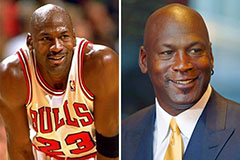When Should You Buy a Baby Pram?
The baby pram market can be a bit confusing, especially when it comes to deciding between a pram and pushchair. Prams are designed for infants up to six months old. They include a bassinet or carrycot to allow babies to lie flat, which is beneficial for their development of their spine and lung function.
What is a pram?
The newborns are precious and the right baby pram will make your journey as a family even more special. A pram typically has an infant carrycot that allows babies to lay flat, which is ideal for their growth and development. This position is also beneficial for lung development. Prams are an excellent choice for newborns and infants up to six months old. age, since they're typically designed to keep them safe, comfortable and snug.
A stroller, often called a pushchair, is typically used by babies who are slightly older. When they're strong enough to support their own heads and sit straight infants can ride in strollers. Strollers also come with a seat that uses the seat belt, a harness and crotch belt to keep children in a secure position.
Both strollers are an excellent choice for parents who want to take advantage of various outdoor activities, like jogging, hiking or shopping. You'll have to weigh the pros and cons of each stroller to decide the one that is right for your baby and you.
Baby prams are a great instrument to help you connect with your child during outdoor adventures. They can help build a stronger connection, and they can learn more about the environment. These strollers can add a touch of elegance and luxury to any journey, and offer comfort to both parents and children. It is important to carefully compare the features of the prams and strollers before choosing the one that's best for your baby. You can then be confident that you are getting the most from your investment, and enjoy a comfortable, happy and stress-free ride.
Who is the user of a pram?
A growing number of parents have an active schedule and require an easy way to transport their young child. This has led to the rise in the demand for baby carriers with wheels called prams, strollers or buggies. They are available in a variety of sizes and styles to accommodate toddlers, infants, and children up until the age of three.
The most loved prams are made for newborns and infants. Most prams have a carrycot that lets the infant to lie flat which is vital for the development of the lungs and spinal cord. They may also have an insulated hood and soft lining to protect them from sun. Some prams feature cribs that can be removed and can be used as a temporary Moses basket. Some models also have an adjustable seat that can be changed to parents-facing (known as world facing) or forward-facing positions.
Prams are often more expensive than strollers but they have a variety of advantages like more supple suspension and greater maneuverability over rough terrain. Some older models feature a fold flat mechanism to make it easy to store.
Over the years, a variety of famous strollers have been made. Some of the most prestigious brands include Millsons Marmet Osnath London Baby Coach LBC.
Today, a few pram manufacturers have expanded their product lines to include car seats as well as other baby products. Mamas & Papas, a brand that has been making strollers and prams in Huddersfield for 30 years, is among these brands. They are known for their fashionable designs, and top-quality construction. Their clientele includes famous faces like Natalie Portman and Gwen Stefani. In addition to their renowned range of prams, they also manufacture baby changing mats and bottles. A variety of travel toys is also available to help keep the baby entertained on long journeys or while visiting public attractions like theme parks.
How does a pram work?
Babies born today should lay flat in their prams, because it's the best position for their healthy breathing and lung and spine development. Once they're able to sit up and stand up, they can step into a stroller, which is more suitable for their age.
The prams are made for parents to push and use, along with a solid, deep carrycot on which your baby can lay. They can also be transformed into travel systems with the addition of infant car seats, making them suitable for infants and toddlers. Prams are also lighter and less difficult to maneuver than strollers, making them ideal for use on any terrain.
The front of a pram could be equipped with a hood that can be adjusted to protect your baby from sunlight, wind or rain. Many prams have large baskets at the bottom to store diaper bags, groceries, and other necessities. They can typically be folded down to a smaller size which makes them easy to store and get out of the car. Many have a footmuff that will keep your baby warm throughout the winter.
If you're shopping for your baby, the rows and rows upon rows of strollers, pushchairs, and prams can seem overwhelming. Knowing the distinctions between these types will help you select the right product for both your baby and your family.
Why do I require a pram?
The decision to get a pram for your baby is one of the most important decisions you make as a parent. It is crucial for their development, health and overall wellbeing. Being able to carry them around in your arms becomes too difficult and exhausting as they develop. Having a suitable transport system allows you to enjoy family walks, travel and shopping excursions without causing too much discomfort for your infant or yourself.
When shopping for a pushchair or pram it can be difficult to decide which model is the best choice for you and for your baby. This is due to the fact that a lot of retailers use different terms to describe similar products - such as stroller, pram and buggy.
A pram is a crib with wheels that is designed specifically for infants. They allow children to lay flat, which is great for their respiratory and spinal development. A lot of prams come with a canopy that protects the baby from rain and sun. A pram is generally heavier and bulkier than a stroller but it is important to consider your life style and how often you will use the item prior to making any purchase decisions.
Strollers are lightweight daily strollers that are designed for infants who can sit. They are ideal for shorter distances and straight routes. Some strollers can transform into a pram or a car seat, making them versatile and give parents choices in their transportation options. For example the Bababing Raffi complete bundle can be used as a pram, car seat, and stroller - making it ideal for growing families. This can help reduce costs since you only need to buy one item instead of four.
At what age should I stop using a stroller for my child?
This is a difficult question to answer as each child grows at a different rate. However, there are general guidelines to help you determine when your child is ready to stop using a pram.
If your child begins to sit up on his own with no assistance, this is a factor to be considered. It usually happens at around six months but it may differ between children. Once your baby is able to sit up unaided, it may be time to transfer them from the pram and into the pushchair.
Your baby's curiosity and level of independence are other important aspects to take into consideration. If your child shows more interest in the world, for example, staring at objects that are passing by or attempting to sit up and gaze at the side of the pram, then it might be time to move them from a stroller to the pushchair.
The weight of your baby is an important factor to consider. The safety regulations establish the weight limits for the maximum and minimum for the majority of prams. Once your baby has reached the maximum or minimum weight, it may be time to change from an infant stroller to a pushchair.
While transferring your baby from the pram to the pushchair can be an exciting milestone, there are also challenges. During this transition period your child may be upset and Push Chairs And Prams UK whine as they are losing their safety zone. But, this is normal and is an indication that they are growing older and becoming independent. Try to be patient and encourage them to walk on their own when they are ready. With perseverance and persistence you will soon observe your baby leaving from the pram.
 Edward Furlong Then & Now!
Edward Furlong Then & Now! Anna Chlumsky Then & Now!
Anna Chlumsky Then & Now! Michael Jordan Then & Now!
Michael Jordan Then & Now! Kelly Le Brock Then & Now!
Kelly Le Brock Then & Now! Rossy de Palma Then & Now!
Rossy de Palma Then & Now!